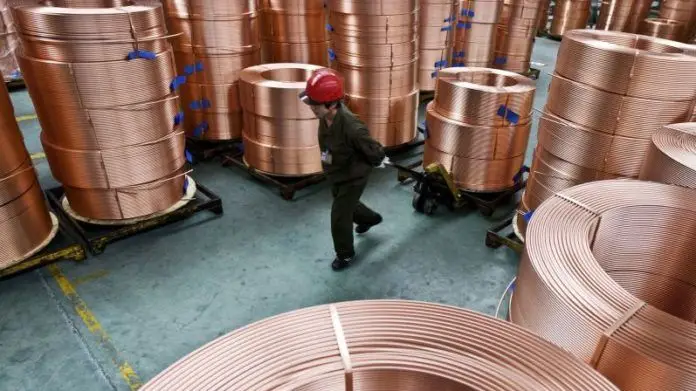In the evolving landscape of international trade, copper export and global supply are more than just industrial terms — they’re powerful indicators of economic health, energy transitions, and technological advancement. From construction to electric vehicles and renewable energy infrastructure, copper is a cornerstone of modern development. As nations race toward net-zero goals, copper’s strategic importance has never been more evident.
Understanding the Pulse of Copper Export and Global Supply
At Steelbridge Export, we closely monitor global shifts in the copper market. Our experience with large-scale shipments, international logistics, and custom compliance allows us to navigate the complexities of copper exports across continents. This article takes a deep dive into the key drivers of copper export trends, the impact of global supply chain dynamics, and what the future holds for industries relying on this vital metal.
Why Copper Matters More Than Ever in the Global Economy
Copper is a highly conductive, durable, and recyclable metal that is irreplaceable in many industrial applications. In recent years, its use has surged due to three primary factors:
Rapid urbanization in developing economies
The global shift to renewable energy and electric mobility
Increasing demand for advanced electronic systems
All these trends directly affect the copper export and global supply dynamic, creating both opportunities and challenges for exporters, manufacturers, and governments alike.

Key Markets Driving Copper Export Growth
Several countries have emerged as the largest players in copper mining, refining, and exporting. Chile remains the dominant global supplier, with Peru, China, and the Democratic Republic of Congo close behind. The top importers of copper include the United States, Germany, and increasingly, countries in the Middle East driven by massive infrastructure.
The Middle East’s demand for copper is expected to increase significantly due to the growing implementation of turnkey solar plant contracts and renewable infrastructure projects. Copper is used in virtually every part of a solar power system — from wiring and grounding to inverter cabling and power storage.
Volatility in Copper Prices: What’s Fueling It?
The copper export and global supply system is not immune to macroeconomic disruptions. Copper prices are notoriously volatile, impacted by:
Supply chain disruptions due to geopolitical instability
Labor strikes in key mining regions
Regulatory pressures and environmental concerns
Speculative trading in global commodity markets
In 2024–2025, uncertainty surrounding U.S.-China relations, inflation, and post-pandemic recovery efforts continues to affect copper pricing. Exporters must remain flexible, responsive, and informed to navigate these market swings.
Challenges Facing the Global Copper Supply Chain
Despite rising demand, the copper industry faces several structural challenges that could impact global supply in the coming years:
Aging Mines and Decreasing Ore Grades
Many of the world’s largest copper mines are operating at reduced efficiency, with ore grades steadily declining. This means more rock must be mined to produce the same amount of copper, raising costs and delaying production.
Environmental and Regulatory Hurdles
New mining projects are increasingly delayed or canceled due to strict environmental regulations, public opposition, and water scarcity — especially in key mining regions like Latin America and Africa.
Logistic Bottlenecks
Shipping delays, port congestion, and a shortage of skilled labor all contribute to slower exports and increased costs. These issues disproportionately affect copper exporters trying to meet tight delivery schedules under fixed-price contracts.
 Innovations Shaping the Future of Copper Export
Innovations Shaping the Future of Copper Export
Despite these headwinds, the copper industry is adapting through technological innovation and smarter logistics. Some of the most promising developments include:
Automated mining and AI-driven ore sorting to improve yield
Blockchain-based supply chain management to enhance traceability
Hybrid shipping solutions to optimize delivery time and carbon footprint
Exporters who invest in these technologies will not only ensure stability in the copper export and global supply chain but will also gain a competitive edge in compliance, traceability, and sustainability.
Middle East: A Strategic Destination for Copper
The Middle East continues to be one of the most promising regions for copper demand, fueled by rapid infrastructure development and energy diversification. Countries like Saudi Arabia, the UAE, and Egypt are scaling up green hydrogen initiatives, and smart city projects — all of which rely heavily on copper-based components.
What makes the Middle East unique is the integrated approach to infrastructure: combining traditional sectors like oil & gas with new age demands such as AI-integrated solar farms and EV charging networks. The ongoing commitment to Investment in these regions adds pressure — and opportunity — for exporters aligned with long-term copper demand.
How Steelbridge Export Supports Copper Trade Growth
At Steelbridge Export, we take pride in providing tailored metal trading services that adapt to the latest market trends. We support our clients by offering:
Real-time market intelligence
Transparent logistics and documentation
Flexible sourcing from trusted global partners
Secure contracts aligned with both short-term deliveries and long-term growth
Our deep understanding of the copper export and global supply ecosystem ensures your business stays ahead of market shifts, compliance risks, and logistical bottlenecks.
The Outlook for Copper Export: 2025 and Beyond
Forecasts from industrial analysts suggest a strong decade for copper, with demand potentially doubling by 2035. However, growth will be unevenly distributed across sectors and geographies. Exporters must strategically choose their markets, establish reliable sourcing partnerships, and invest in technology to meet quality and timeline demands.
Final Thoughts: Positioning for Opportunity in Copper Trade
Copper is no longer just a commodity — it is a critical enabler of the future economy. Whether you’re a trader, contractor, or procurement officer, understanding the complexities of copper export and global supply will help you navigate pricing cycles, manage sourcing risks, and capture emerging opportunities.
With strategic support from expert trading firms like Steelbridge Export, industrial buyers can secure reliable access to copper in competitive international markets. As global supply chains evolve, those who act early and adapt fast will shape the next decade of the copper economy.
For more insights into copper trade and raw material strategies, visit serviceexportet
FAQ
- What factors are driving the growth of copper export and global supply?
Copper export and global supply growth are primarily driven by rising demand in renewable energy, electric vehicles, infrastructure development, and advanced electronics. Urbanization in emerging markets and energy transition policies worldwide are increasing the strategic importance of copper in global trade.
- Which countries lead the global copper export and import markets?
Chile is the top copper exporter globally, followed by Peru, China, and the Democratic Republic of Congo. Major importers include the United States, Germany, and Middle Eastern countries like Saudi Arabia and the UAE, which are ramping up investments in smart cities and solar energy projects.
- What are the main challenges in the global copper supply chain?
Key challenges include declining ore grades in aging mines, stricter environmental regulations, geopolitical instability, and logistical bottlenecks such as port congestion and shipping delays. These issues can disrupt copper exports and increase pricing volatility across global markets.
- How is technology improving the copper export process?
Advanced technologies such as AI-powered ore sorting, blockchain-based supply chain tracking, and hybrid shipping logistics are enhancing efficiency, traceability, and sustainability in the copper export and global supply industry. These innovations help exporters meet rising compliance and performance standards.
- Why is the Middle East becoming a key market for copper exports?
The Middle East is experiencing rapid growth in infrastructure, renewable energy, and EV networks, increasing its copper consumption. Countries like Saudi Arabia and the UAE are investing heavily in solar power, green hydrogen, and smart grid projects, making the region a strategic destination for copper exporters.
more: The Role of Nickel & Cobalt in Battery Production and Global Trade




 Innovations Shaping the Future of Copper Export
Innovations Shaping the Future of Copper Export




